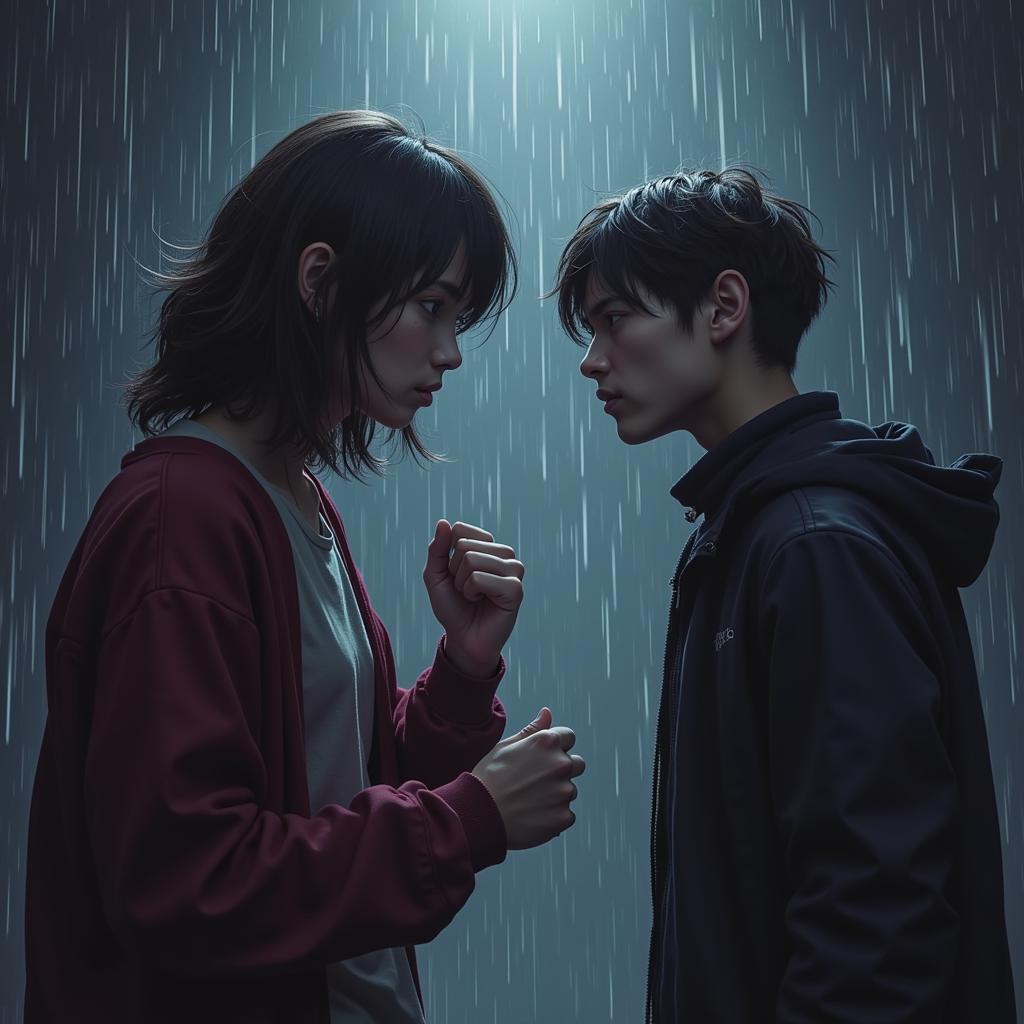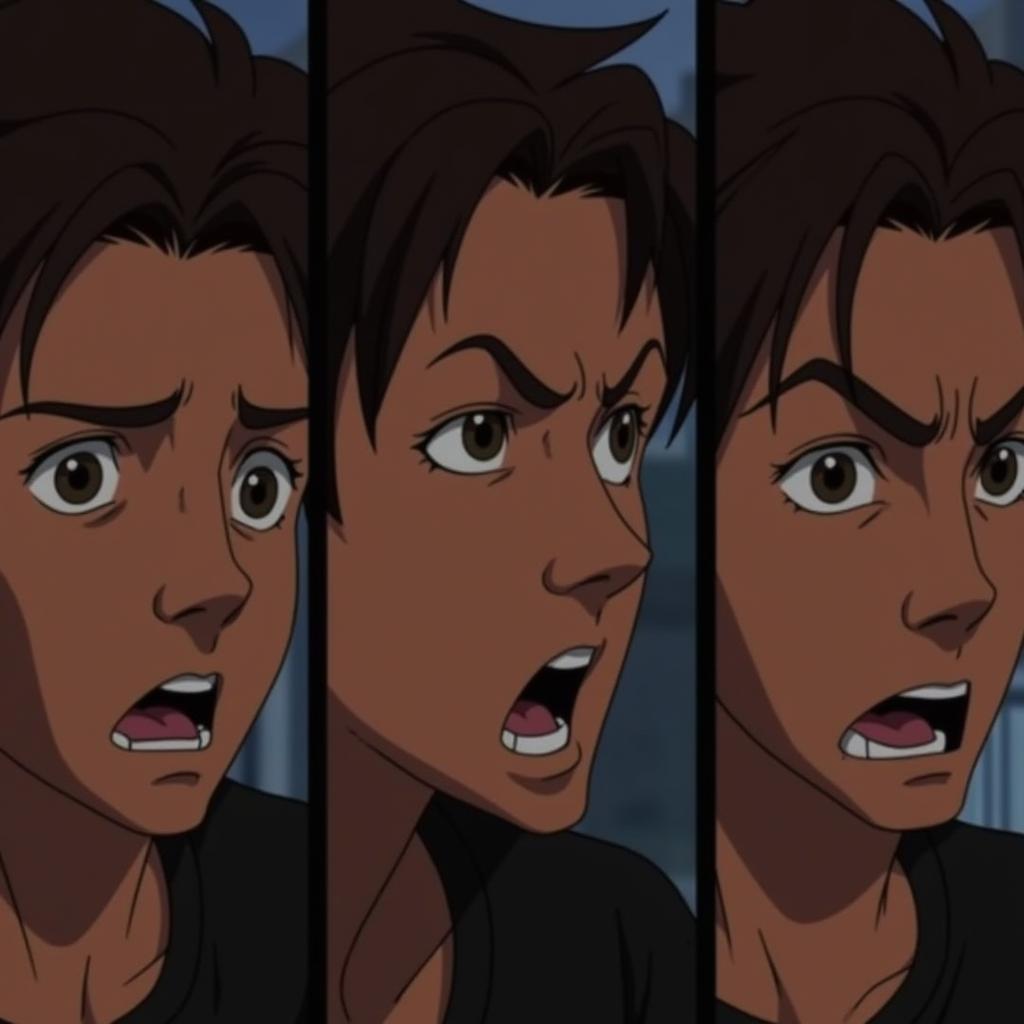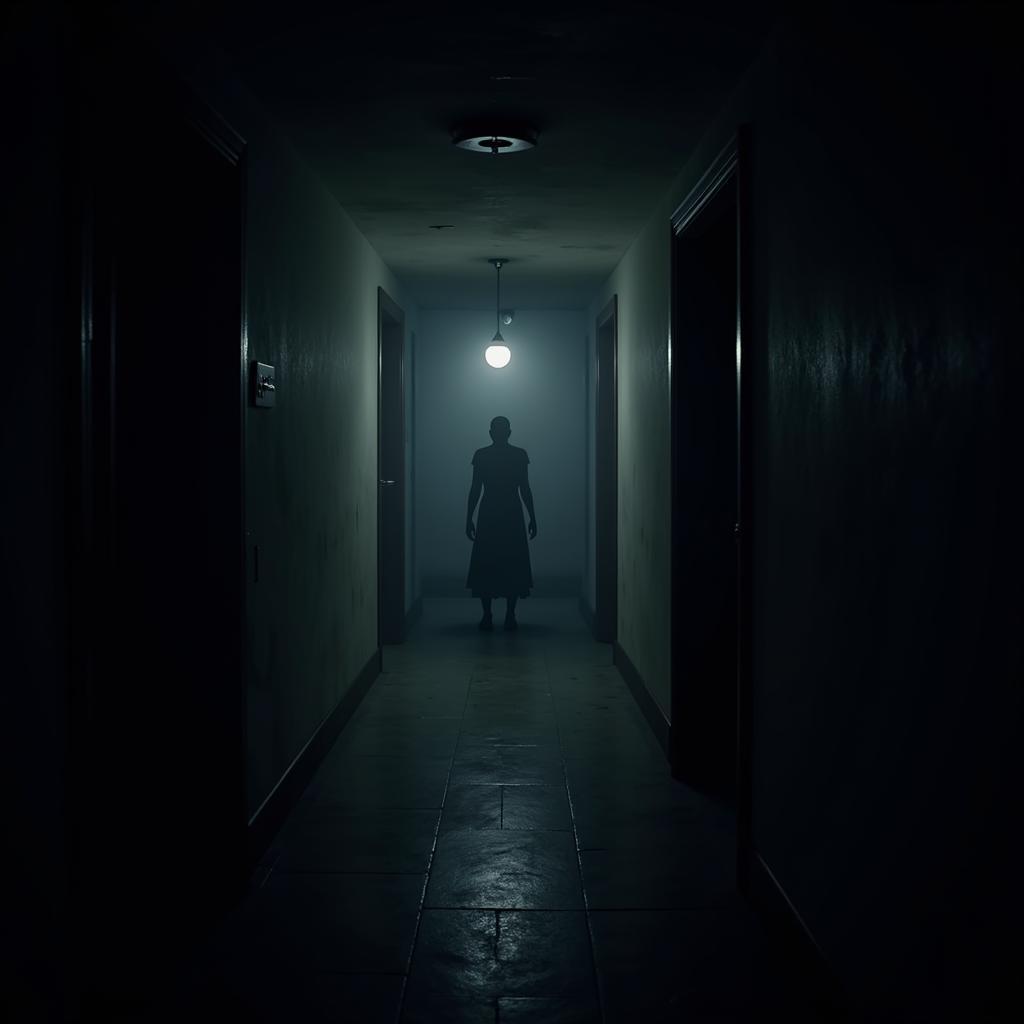Dramatic Scenes are the heart-pounding moments that stick with us long after the credits roll. They are the emotional peaks and valleys that define a story and leave a lasting impression. Whether you’re a gamer experiencing these moments firsthand or a content creator seeking to craft them, understanding what makes a scene truly dramatic is essential. For gamers, dramatic scenes enhance immersion and create memorable experiences. And you know, sometimes you need a good cinematic cam to truly capture the drama!
The Elements of a Dramatic Scene
Several key components contribute to a scene’s dramatic impact. These elements work together to build tension, evoke emotion, and create a sense of significance.
- Conflict: At the core of every dramatic scene lies conflict. This could be a physical confrontation, a clash of ideals, or an internal struggle within a character. Without conflict, there’s no drama.
- Stakes: What does the character stand to gain or lose? The higher the stakes, the more invested the audience becomes. Is it a matter of life or death? Love or loss? The fate of the world?
- Pacing: The speed at which a scene unfolds greatly affects its dramatic impact. A slow burn can build anticipation, while a rapid-fire sequence can create a sense of urgency and excitement.
- Dialogue: Powerful dialogue can heighten tension, reveal character motivations, and deliver emotional gut punches. Think of those iconic lines that resonate with you long after you’ve heard them.
 Example of Conflict in a Dramatic Scene
Example of Conflict in a Dramatic Scene
Building Tension and Suspense
Tension is the lifeblood of a dramatic scene. It’s the feeling of anticipation and uncertainty that keeps the audience on the edge of their seats. Here’s how to build it:
- Foreshadowing: Hint at impending danger or conflict to create a sense of unease. A subtle clue or ominous warning can significantly amplify the tension.
- Rising Action: Gradually escalate the conflict, raising the stakes and increasing the pressure on the characters.
- Climax: This is the peak of the dramatic arc, the moment of greatest tension and confrontation. It’s the point where everything comes to a head.
What are some common examples of foreshadowing? A darkened hallway, a sudden gust of wind, a whispered warning – these are all classic techniques used to build suspense.
Creating Emotional Impact
Dramatic scenes are meant to evoke strong emotions in the audience. Whether it’s fear, sadness, joy, or anger, these emotions connect us to the characters and their experiences.
- Character Development: We care more about characters we understand and relate to. Give your audience insight into their motivations, fears, and aspirations.
- Show, Don’t Tell: Instead of simply stating a character’s emotions, use actions, expressions, and body language to convey their inner turmoil.
- Music and Sound Effects: The right soundtrack can dramatically amplify the emotional impact of a scene. Think about how music affects your own emotional response to films and games. Need some inspiration? Check out dark f1 2016 images for some visually dramatic content.
 Facial Expressions and Emotional Impact
Facial Expressions and Emotional Impact
From Script to Screen: Bringing Dramatic Scenes to Life
Bringing a dramatic scene to life requires careful consideration of various elements. Lighting, camera angles, and editing all play a crucial role in enhancing the emotional impact.
“The power of a dramatic scene lies not just in the words, but in how those words are delivered and visualized,” says renowned game director, Anya Sharma. “A well-placed camera angle or a shift in lighting can completely transform the audience’s experience.”
Dramatic Scenes in Different Genres
Different genres demand different approaches to dramatic scenes. A horror game relies on jump scares and psychological thrills, while a romantic drama focuses on emotional intimacy and character relationships. Understanding the conventions of your chosen genre is key to creating impactful dramatic scenes. Looking for dramatic dialogue examples? Consider exploring the apartment script.
 Horror Game Dramatic Scene
Horror Game Dramatic Scene
Conclusion
Crafting dramatic scenes is an art form that requires a deep understanding of storytelling, character development, and the technical aspects of your chosen medium. By mastering these elements, you can create truly memorable moments that resonate with your audience long after the experience is over. Remember, dramatic scenes are the key to creating compelling and engaging narratives. What are some of your favorite dramatic scenes in games? Share your thoughts in the comments below! And if you’re looking for some cool gaming merch, check out this inquisition merch. You might also enjoy looking at some gshade presets sims 4 tumblr for visually stunning experiences.
FAQ
- What makes a scene dramatic? Conflict, high stakes, and emotional impact are key elements of a dramatic scene.
- How do you build tension in a scene? Foreshadowing, rising action, and a well-paced climax contribute to building tension.
- What role does dialogue play in dramatic scenes? Powerful dialogue can heighten tension and reveal character motivations.
- How can I create emotional impact in my scenes? Focus on character development and show, don’t tell. Music and sound also play a vital role.
- How do dramatic scenes differ across genres? Different genres have different conventions and expectations for dramatic scenes.
- What are some examples of dramatic scenes in games? The final battle in a RPG, a tense negotiation in a strategy game, or a heart-wrenching choice in a narrative-driven adventure.
- What are some resources for learning more about creating dramatic scenes? Books on screenwriting, filmmaking tutorials, and analyzing dramatic scenes in your favorite games can be helpful resources.
Need help with dramatic scenes in your game?
Contact us!
Phone: 0902476650
Email: [email protected]
Address: 139 Đ. Võ Văn Kiệt, Hoà Long, Bà Rịa, Bà Rịa – Vũng Tàu, Việt Nam.
We have a 24/7 customer support team ready to assist you.





